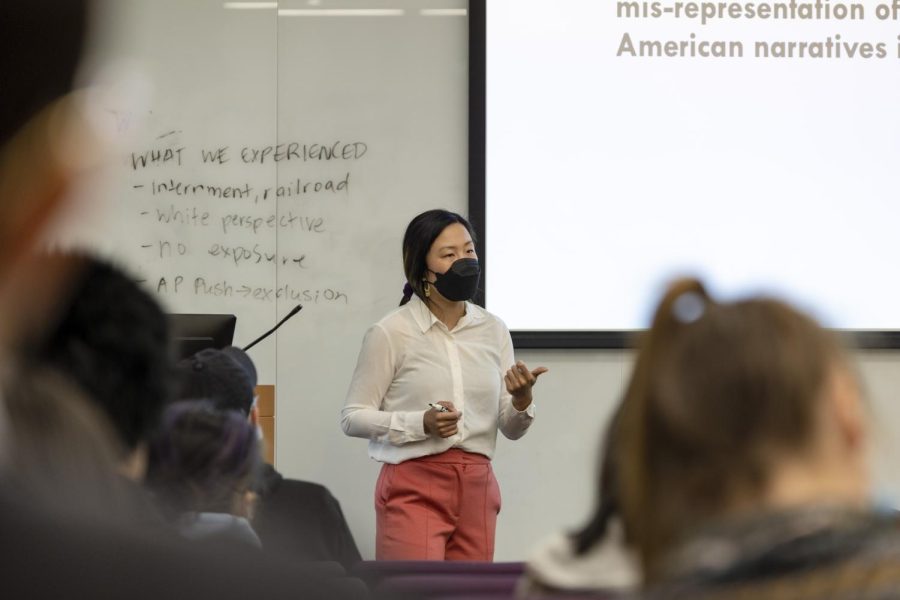Home to roughly half of the world’s population, Asia is a relatively untapped market where streaming habits are still forming. It means that hundreds of millions of subscribers could still potentially be up for grabs, as growth starts to drag in the U.S., Europe and elsewhere.
But Netflix faces formidable challenges to keep expanding in countries across Asia. The world’s key streaming battleground is crowded—and altogether cheaper.
Park Sae-eun, a tech industry worker in Seoul, enjoys Netflix but spends the bulk of her time streaming South Korean shows on two different local services that offer a wider library of domestic content. If the mega hits stop coming, she would consider dropping her Netflix subscription. “Without original shows, it wouldn’t be worth using Netflix,” said Ms. Park, 27 years old. “For local shows, there are several other platforms that could become Netflix replacements.”
Winning in Asia may require bigger investments to create or license local content for cost-conscious consumers, or risk losing ground in a crowded field. Even for programming made outside the region, the bar is higher to grab attention across the Asia-Pacific, due to language or cultural differences. Most consumers want to see shows and movies in their native language, even if they enjoy foreign-produced shows.
In addition to Netflix’s deep-pocketed U.S.-based rivals, like Walt Disney Co. ’s Disney+ and Amazon.com Inc.’s Prime Video, the competition in Asia includes hundreds of local upstarts armed with more in-country offerings, with plans sold at lower prices.
There are dozens each in South Korea and Japan, 40 in Hong Kong and Taiwan and more than 70 across Southeast Asia, according to Media Partners Asia, a Singapore-based market researcher that tracks various types of on-demand video-streaming services in the region. Netflix’s cheapest plan in India, where it recently slashed prices to compete with 80 competitors, goes for about $2 a month—or triple what some homegrown options charge.
That magnifies the pressure for Netflix to keep churning out blockbusters that can justify the higher price tag, just as the company pulls back on its lavish spending. What makes Asia different is that streaming is still so relatively new that many viewers are still making up their minds, said Vivek Couto, executive director at Media Partners Asia.
More than three-quarters of households in matured streaming markets like the U.S. have already subscribed to a subscription video streaming service, according to Media Partners Asia. But even in wealthier parts of Asia, like South Korea and Japan, adoption is at less than half of all households, the researcher says. Roughly 10% of households use a subscription video streaming service in India and many parts of Southeast Asia, which together represent about a quarter of the world’s population.
Even so, the Asia-Pacific region is already the single largest market for on-demand video streaming subscriptions. It accounts for 43% of the world’s subscriber base as of this year, according to Ampere Analysis, a London-based research firm. That compares with 29% from North America, 16% from Europe and 8% from Central and South America. No region is projected to grow as quickly as Asia in the coming years, Ampere estimates.
The region’s numbers include China, which is stocked with domestic options and remains largely sealed off from Netflix and other foreign companies.
Netflix has about 220 million paid memberships world-wide. The 1.1 million subscribers added in the Asia-Pacific region during the first three months of the year represented the only area of quarterly growth in the company’s subscriber base after experiencing a collective pullback of some 1.3 million members everywhere else.
Only about 15% of Netflix’s overall subscribers, and about one-tenth of annual revenue, come from the Asia-Pacific region as of early this year.
That reflects how Asia’s introduction to streaming was several years behind the U.S., Europe and Latin America. Netflix entered the region in the middle of the last decade, often as the first streaming service. In many countries, people had been watching what aired on their basic cable or free network channels. Other countries lacked a robust local entertainment industry, meaning it had to wait for Netflix—or another rival—to emerge with deep libraries of high-quality content that would be worth the cost, said Mr. Couto of Media Partners of Asia.
In recent years, Netflix has learned plenty about local consumers’ preferences and continues to see opportunities for further investment, said Minyoung Kim, who oversees Netflix’s creative activities and content in the Asia-Pacific region except for India.
Netflix came ready to spend on local shows that could help build an audience in Asia. In South Korea, it has spent more than $1 billion on local content, including “Squid Game,” the dystopian drama that became its most-watched show ever. The company has also invested around $400 million on programming in India in recent years. Since last year, Netflix, seeking to boost ties across Southeast Asia, has hosted a series writing workshop for local artists, a short film workshop in Thailand and a film competition in Vietnam.
It is also working to develop more localized shows in Japan, recently inking its first partnership with a Japanese feature animation studio, Studio Colorido, to increase its anime offerings.
All that costs money. Netflix could increase revenues, and lower prices, by offering an ad-supported version of the service. But Netflix’s chief rivals—with no-commercial offerings and competitive pricing—are already stealing away subscribers like Yuichi Tamura, a 40-year-old engineer at a Tokyo technology company.
He signed up for Netflix as the pandemic began two years ago, drawn to the South Korean drama “Crash Landing on You.” But few other Netflix shows hooked him, so he canceled his roughly $7.70-a-month basic plan. His children, he said, are content watching anime offered on Amazon’s Prime Video, which costs roughly half the price of a basic Netflix subscription.
Some of Netflix’s U.S.-based rivals are also moving aggressively into making Asian content of their own. Disney+ wants to green light more than 50 original productions for the Asia-Pacific region by next year, the company said.
“This is just the beginning of the battle for great content,” said Luke Kang, Walt Disney’s Asia-Pacific president, in an interview late last year.
Netflix currently holds the No. 1 spot in many markets across Asia. But India, where it slashed prices by as much as 60% for some plans, is a major exception.
The top player there is Disney-owned Hotstar, which had 51 million subscribers in 2021, nearly doubling from the prior year, owing to having the streaming rights to India’s most popular cricket league, according to Media Partners Asia. Amazon was No. 2 at around 22 million subscribers. Netflix came in third at 6.1 million, a boost from 4.6 million a year earlier, the research firm said.
Both Hotstar and Amazon charge about $20 a year, which includes access to all their high-quality, 4K Ultra HD content. Netflix offers spartan mobile-only plans that are as low as $2, though their premium plans can cost as much as $10 a month.
“Everyone talks about Netflix. Everyone talks about its shows. It is expensive compared to Amazon Prime and Disney,” said Deeksha Goel, 35, who lives in the northern city of Bareilly in India’s Uttar Pradesh state.
The price wars can mean a literal race to the bottom. Netflix, for now, has Vietnam all to itself with other big foreign rivals still readying their entries. But in November, Netflix, seeking to capture more viewers, began offering free access to some of its most-popular shows—including “Money Heist” and “Emily in Paris”—to people using Android smartphones. The service didn’t feature ads or require individuals to enter any payment information.
—Joyu Wang in Taipei and Feliz Solomon in Singapore contributed to this article.
Write to Jiyoung Sohn at jiyoung.sohn@wsj.com, Vibhuti Agarwal at vibhuti.agarwal@wsj.com and Miho Inada at miho.inada@wsj.com

/sundar_pichai__svp_android_chrome_and_apps_google-5bfc42b7c9e77c002635d965.jpg)












